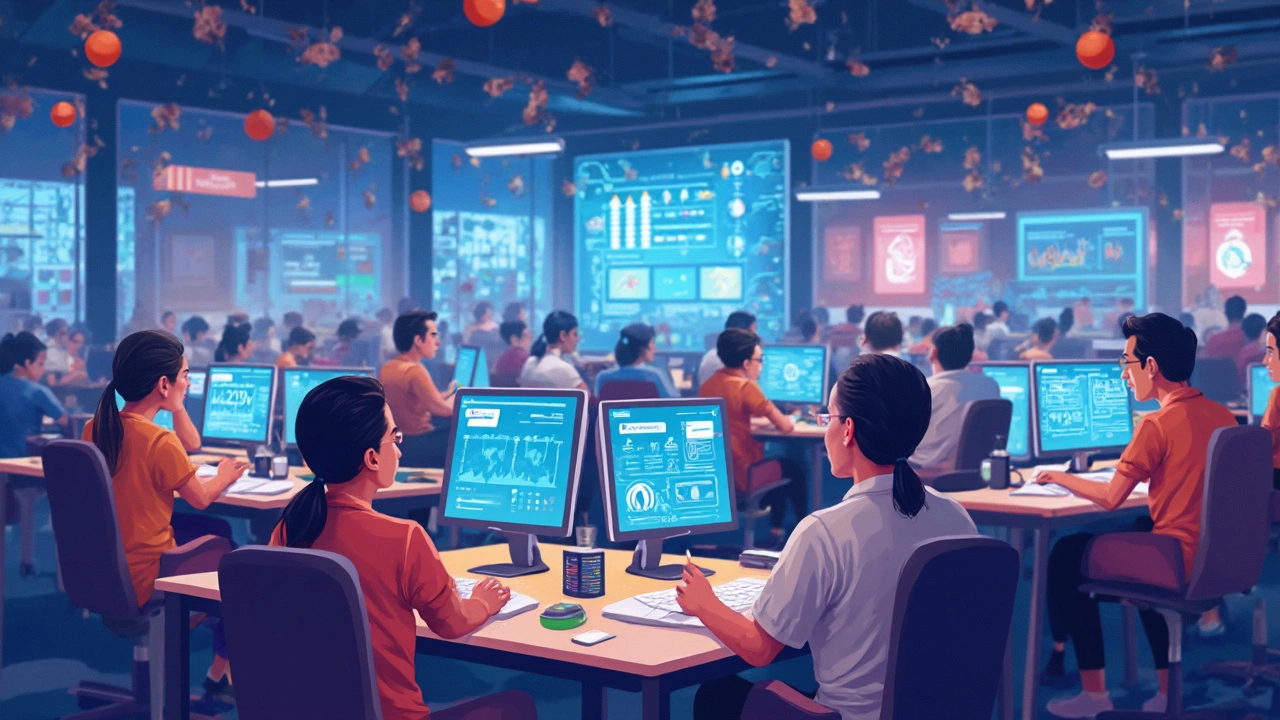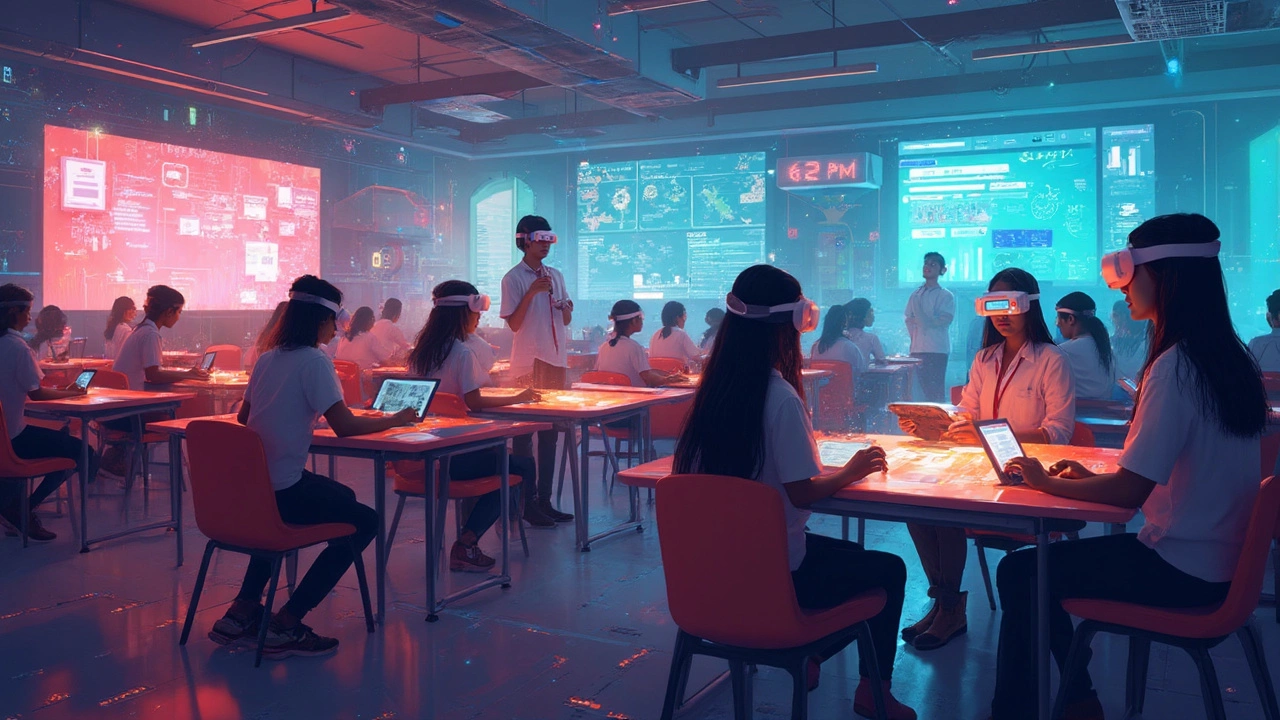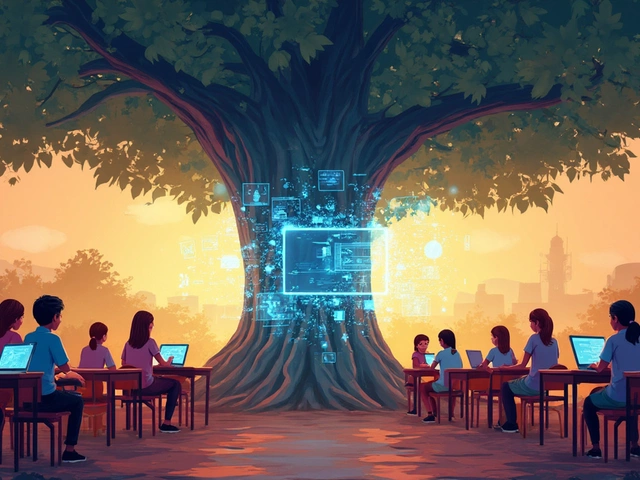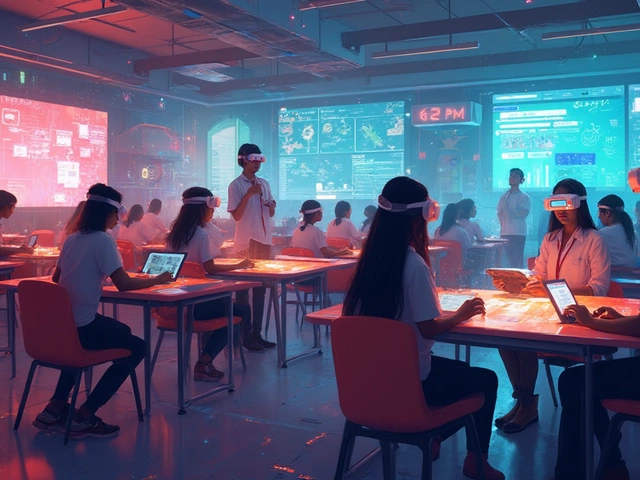Have you ever heard of SCORM? It's been around forever—or at least since the early 2000s—in the world of e-learning. SCORM, short for Sharable Content Object Reference Model, is a set of technical standards. It ensures courses and learning content can be reused across different systems. But guess what? It’s kinda stuck in time. While it served us well, the e-learning game is changing fast.
Enter xAPI, the Experience API. Think of it as SCORM’s cooler, more tech-savvy cousin. xAPI doesn’t just track completion rates or test scores like SCORM; it’s like the Sherlock Holmes of learning experiences, tracking almost every move a learner makes. From mobile learning to social learning interactions, xAPI keeps an eye on it all.
So, why's everyone excited about this shift? Well, imagine personalized learning journeys, where every click and interaction tells a story. xAPI lets developers and educators craft a detailed roadmap of learner engagement. And let’s face it, in today’s world, knowing how people learn is just as valuable as what they learn.
- Understanding SCORM's Role
- The Emergence of xAPI
- Why xAPI is Gaining Popularity
- Benefits for Learners and Instructors
- The Future of Learning Standards
Understanding SCORM's Role
Diving into e-learning is tough without running into SCORM. It's like that old reliable friend who’s been around forever. Originating in the early 2000s, SCORM set out some rules to ensure that e-learning content could work across various Learning Management Systems (LMS). But why did it become such a big deal?
The Basics of SCORM
At its core, SCORM is all about interoperability, reusability, and standardization. Imagine creating a lesson on geometry; you want it to work seamlessly whether a student is using Platform A or Platform B. SCORM made this possible by defining how content and platforms should communicate. Think of it as the universal translator for e-learning content.
SCORM's Performance Metrics
It tracks basic data points like whether a learner completed a module or what score they achieved on a test. Useful? Sure. But it doesn't capture a lot beyond the surface. In a way, it's like grading a performance with just A, B, or C without understanding the why behind it.
| Year | SCORM Adoption Rate (%) |
|---|---|
| 2004 | 50% |
| 2010 | 75% |
| 2023 | 80% |
Despite its age, SCORM has a decent foothold. Even in 2023, around 80% of e-learning systems still support it. That’s solid, but the need for more dynamic and detailed learning analysis is clearly on the rise.
Limitations of SCORM
As handy as SCORM is, it's a bit like operating with an old phone—it gets the job done, but misses out on the latest features. It struggles with mobile learning, real-time syncing, and capturing experiences outside formal settings. This is where newer standards are stepping up to steal the show.
SCORM certainly played a massive role in shaping e-learning. But as learning experiences become more complex and interactive, the industry is gravitating towards alternatives that offer richer data analytics and flexibility.
The Emergence of xAPI
So, what’s driving the buzz about xAPI, often dubbed the Tin Can API? It's not just hype. This latest tech marvel is revolutionizing how we think about learning data. Where SCORM was limited, xAPI opens up a world of opportunities for tracking a learner's journey in much richer detail.
Why xAPI Was Born
Well, back when SCORM was king, the focus was mostly on content delivery—play the video, take the quiz, rinse and repeat. But learning isn't so linear or confined to a specific platform anymore. With learners hopping from mobile apps to websites to virtual reality, we needed something as flexible as their habits. That’s where xAPI swoops in, offering a way to create a cohesive learning experience even if the content is spread out across various platforms.
What Makes xAPI Stand Out
Perhaps the coolest part? xAPI tracks everything. And I mean everything—from the podcast you listened to on your way to work to the problem-solving app you used during lunch. This extensive tracking gives educators powerful insights that were unimaginable before. It helps in creating adaptive learning paths, making education truly personalized.
Here’s a quick look at what xAPI brings to the table:
- Flexibility: It works with almost any training or education format.
- Detailed Tracking: Beyond completion rates, it logs behaviors and skills applied.
- Cross-platform Syncing: Tracks activities across devices and environments.
Real-world Applications
Numbers tell a compelling story about its adoption. A recent survey noted a 50% increase in companies implementing xAPI over SCORM for their e-learning systems in the past three years. They're recognizing that in a data-driven world, capturing detailed analytics isn’t a luxury but a necessity.
So, as we venture further into a tech-centered future, xAPI serves as a bridge to next-gen learning experiences. Whether you're a corporate trainer or a university educator, diving into xAPI isn't just about keeping up, it's about staying ahead.

Why xAPI is Gaining Popularity
So, why is xAPI getting attention and stealing the spotlight from SCORM? Well, let’s break it down. First up, the flexibility. xAPI isn’t limited to just traditional e-learning setups. It goes beyond, capturing data from experiences like videos, simulations, games, and even activities outside the web. It’s the go-to for folks who want detailed insights.
Next, let’s talk about real-world applications. Ever tried learning something via your mobile while on the go? Or maybe picked up skills in a workshop or through social interactions? xAPI can track all that. Whether it’s online or offline, it logs the complete learning journey. This means it’s not just about what's happening on a computer screen, but encompassing real-world experiences too.
The Role of Detailed Analytics
xAPI comes with the added benefit of providing detailed analytics. It's great for organizations that thrive on data-driven decisions. Learning and development teams can create comprehensive reports and adjust learning paths based on this data. Unlike SCORM, which mainly tracks course completion and scores, xAPI offers richer information, enabling more targeted interventions.
Compatibility and Integration
We're in a tech-forward era, and compatibility is a must—no one likes systems that won’t talk to each other. xAPI integrates seamlessly with existing systems and can co-exist with SCORM until you're ready for a full transition. This compatibility means that organizations don’t have to throw away old content or reinvent the wheel. They can slowly build a more robust learning ecosystem.
According to a study data from 2023, companies that switched to xAPI reported a 45% increase in learner engagement and a 30% rise in knowledge retention after six months of implementation. With xAPI, everyone from corporate giants to small educational outfits can benefit from improved learning outcomes.
Benefits for Learners and Instructors
Moving from SCORM to xAPI opens a world of benefits for both learners and instructors. Let’s dive into how this new technology makes learning more engaging and teaching more effective.
Tailored Learning Experiences
For learners, it’s like having a personal tutor. xAPI tracks not just course progress but every interaction, be it a video watched or a quiz answered. With this data, courses can adapt, offering a personalized learning path. This means more relevant content when you need it the most.
Comprehensive Insights
Instructors gain superpowers with the data xAPI collects. They're not just grading tests; they’re analyzing learning patterns and behaviors. For instance, if a student struggles with a topic, instructors can offer additional resources or remedial action, often before the learner even asks for help.
Seamless Learning Across Platforms
How often do you switch between devices? With xAPI, learners can start a course on a phone and continue on a laptop without losing track of progress. It ensures a smooth learning journey, irrespective of where or how learners access their courses.
Boosted Engagement
Thanks to e-learning details that xAPI can capture, content creators can design more interactive and dynamic courses, including gamified elements to keep learners engaged. Who doesn't love earning badges or reaching new levels while learning?
| Benefit | Type | Description |
|---|---|---|
| Personalization | Learner | Courses adapt based on individual interactions. |
| Rich Data | Instructor | Comprehensive insights into learners’ progress. |
| Cross-Platform Sync | Both | Seamless access across multiple devices. |
| Increased Engagement | Learner | Interactive learning elements keep learners motivated. |
In a nutshell, xAPI revolutionizes the e-learning experience. It’s all about giving learners the control and instructors the insight. With these tools, we’re not just teaching; we’re creating more informed and active learners.

The Future of Learning Standards
Let's talk about where learning standards are headed. We're in a digital age where everything from groceries to education is shifting online. So, it makes sense that e-learning needs to keep up, right? Well, that's where technologies like xAPI step in—a big upgrade from the traditional SCORM.
The cool thing about new standards like xAPI is their flexibility. Unlike SCORM, which is a bit like that friend who still uses a flip phone, xAPI is designed for the future. It tracks nearly any learning experience—online, offline, even on mobile apps! That's super handy for tailoring learning experiences to the individual, something that’s crucial in today's learning environments.
Interoperability and Data Sharing
Interoperability is the buzzword here. Systems need to talk to each other, and learning platforms are no exception. xAPI offers this ability, enabling seamless data sharing across different systems. So, whether learners switch platforms or devices, they won't miss a beat. This cross-platform learning experience is something SCORM just can't provide.
Personalized Learning Paths
With xAPI, the goal is personalizing learning paths. How does it do that? By collecting detailed data. Think of it like a fitness tracker but for learning. Schools and companies can analyze what works for individuals, adapting courses to ensure maximum engagement and effectiveness.
There's also a growing trend of integrating AI with these new standards. Imagine algorithms tweaking lessons in real time to suit one's learning habits. That's next-level personalized education!
Future Opportunities
We've got a ton of possibilities with these emerging learning standards. Not just better data but also better outcomes. Organizations can drive improvements in education quality and access by weaving these insights into the larger learning ecosystem.
Soon, we might even see more integration with virtual reality and simulations, taking learning to entirely new horizons. So, whether you're a learner, educator, or developer, the shift beyond SCORM is opening a world of possibilities.



